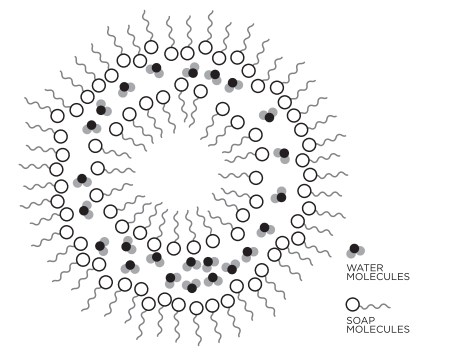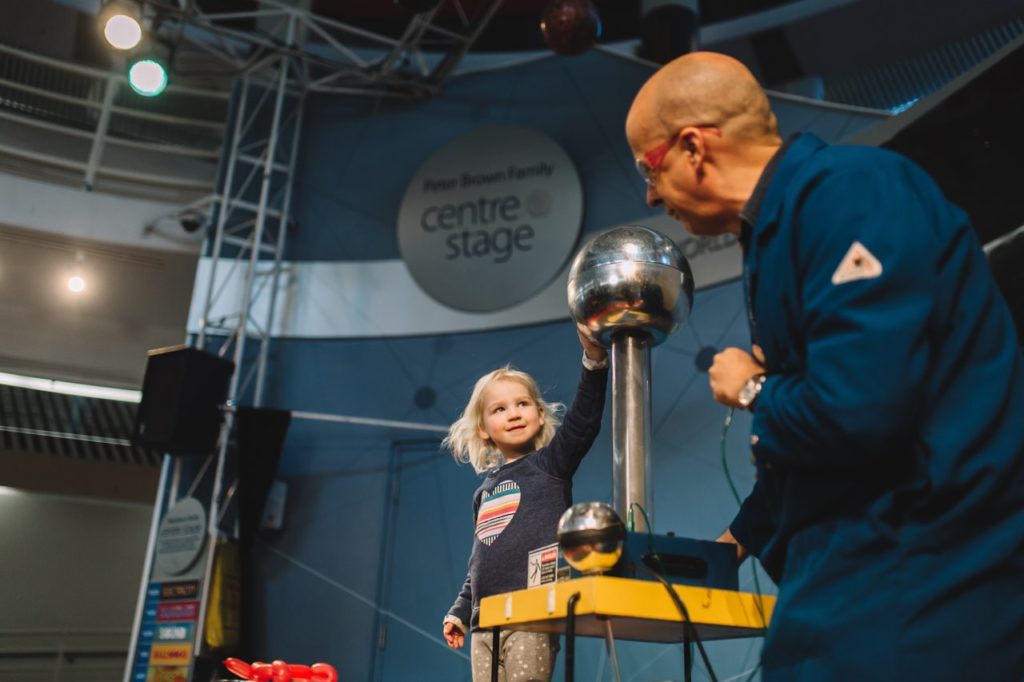In this demonstration students learn what causes bubbles to pop and what they can do to increase the longevity of their bubbles.
Why bubbles pop

The film of soapy water that forms the ‘skin’ of a bubble has a structure like a sandwich. Two layers of soap molecules (the “bread”) sandwich a “filling” of water.
A bubble will stay a bubble as long as its water “filling” is trapped between the layers of soap. It will pop when that water is lost in some way. There are a few different ways that a bubble can lose its water and pop:
- When you make bubbles in the sun, or in a place with very dry air, they evaporate quickly.
- In the wind, bubbles are much more difficult to create and will be popped by puffs of air.
- If a bubble touches a dry finger, it pops because the water molecules are attracted to your dry skin.
Increasing bubble life expectancy
Here are some recommendations for the best conditions for making bubbles:
- Avoid bright sunlight: play in shady areas, in the early morning, or just after sunset.
- Avoid the wind: choose a calm day or a sheltered location.
- Choose a damp day. Immediately after a rainstorm is ideal.
- Move to where your bubbles don’t run into dry objects.
- Add glycerine to the bubble solution to make your bubbles last longer. Glycerine is hydroscopic, which means that it attracts water, so the bubbles evaporate more slowly.
- Keep your hands and bubble tools really wet with bubble solution.

